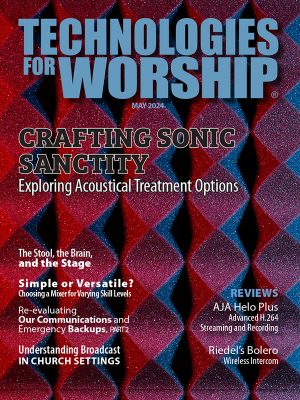
Understanding the Importance of Immersive Audio
Immersive audio transcends ordinary sound reinforcement by enveloping listeners in a multi-dimensional sonic environment. It fosters a deeper connection to worship music, spoken word, and overall worship experiences. Immersive audio techniques can include spatial effects, surround sound configurations, and precise sound localization, all aimed at enhancing emotional and spiritual engagement.
Assessing Your Church’s Audio Needs
Begin by conducting a comprehensive assessment of your church’s audio needs. Consider the size and layout of your worship space, acoustical properties, seating arrangements, and the types of events or services you host. Determine the audio requirements for music, spoken word clarity, and multimedia presentations to tailor your immersive audio setup accordingly.
Investing in Quality Audio Equipment
Investing in high-quality audio equipment is essential for achieving an immersive audio experience. This includes professional-grade speakers, amplifiers, mixers, microphones, and signal processing tools. Choose equipment that matches the acoustic characteristics of your worship space and supports immersive audio formats such as surround sound or spatial audio processing.
Optimizing Acoustics
Acoustics play a significant role in audio immersion. Consider acoustical treatments such as sound-absorbing panels, diffusers, and bass traps to minimize reflections, echoes, and unwanted noise. Work with acoustical consultants or audio engineers to optimize room acoustics for enhanced clarity, intelligibility, and immersive sound reproduction.
Implementing Surround Sound and Spatial Audio
Utilize surround sound configurations, such as 5.1 or 7.1 speaker setups, to create a spatially immersive audio experience. Position speakers strategically to envelop listeners with music and spoken word from multiple directions. Explore spatial audio technologies, such as object-based audio or immersive audio processing, to enhance realism and depth in sound reproduction.
Balancing Audio Levels and Dynamics
Achieving a balanced audio mix is crucial for immersive experiences. Pay attention to volume levels, frequency balance, and dynamic range to ensure clarity and impact. Use dynamic processing tools like compressors, limiters, and equalizers to manage audio dynamics and create a consistent sonic experience throughout your worship services.
Integrating Live and Recorded Elements
Integrate live performances, worship music, and pre-recorded elements seamlessly within your immersive audio setup. Use audio playback systems for pre-recorded music, sound effects, and multimedia content. Coordinate transitions between live and recorded elements for a cohesive and uninterrupted worship experience.
Training and Technical Support
Provide training to audio engineers, volunteers, and worship team members on operating and optimizing your immersive audio system. Invest in technical support and maintenance to address any issues promptly and ensure optimal performance during worship services and events.
Gathering Feedback and Continuous Improvement
Gather feedback from congregants and worship leaders to assess the impact of your immersive audio setup. Solicit input on audio quality, clarity, immersion, and overall worship experience. Use feedback to make data-driven adjustments, improvements, and refinements to your audio system for continuous enhancement.
Creating an immersive audio experience in your church requires a strategic approach, investment in quality equipment, acoustical optimization, and ongoing refinement. By understanding your church’s audio needs, implementing immersive audio technologies, balancing audio dynamics, and integrating live and recorded elements seamlessly, you can elevate the worship experience for your congregation. Embrace feedback, continuous improvement, and technical expertise to craft a sonic environment that fosters spiritual connection, engagement, and worshipful experiences.




